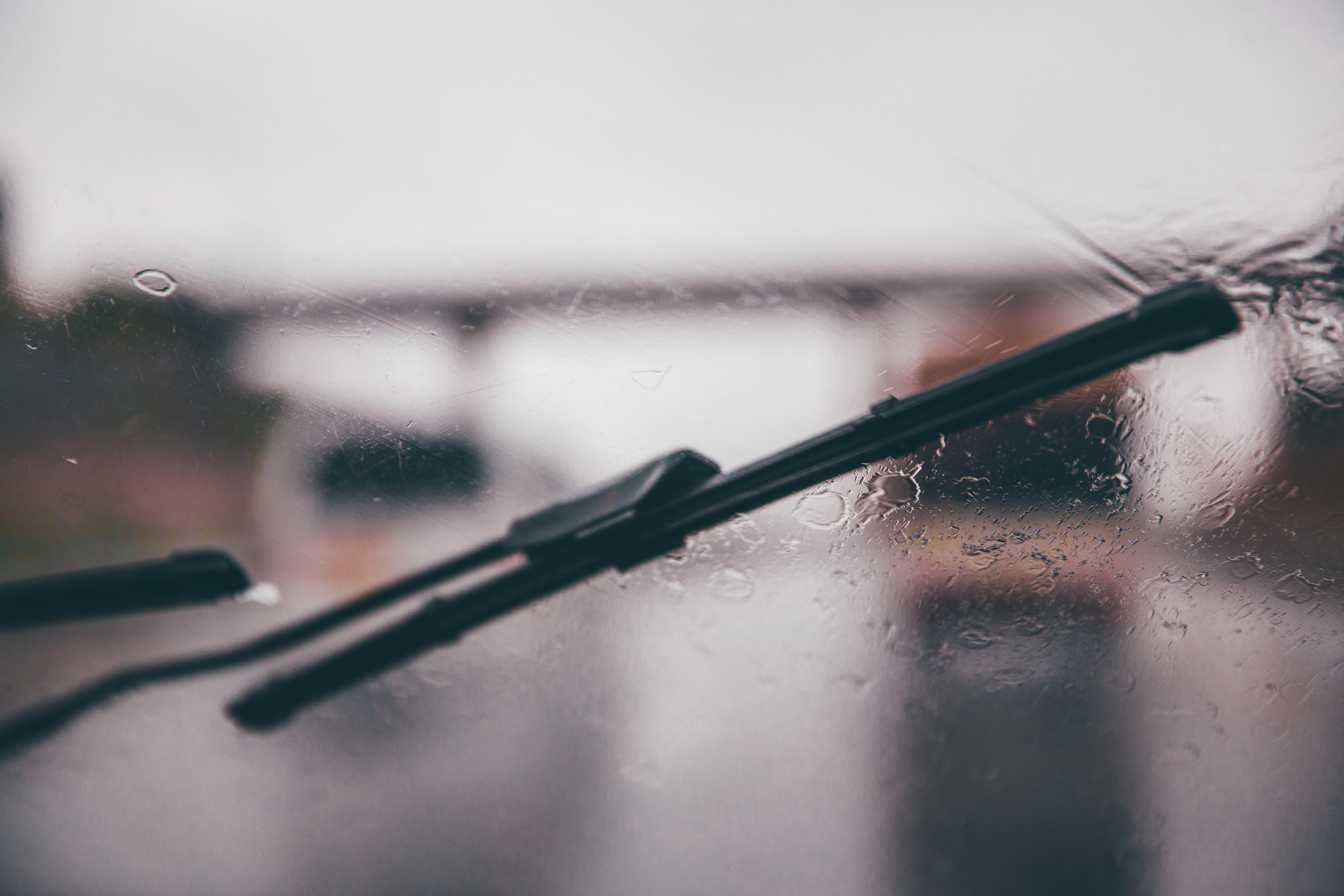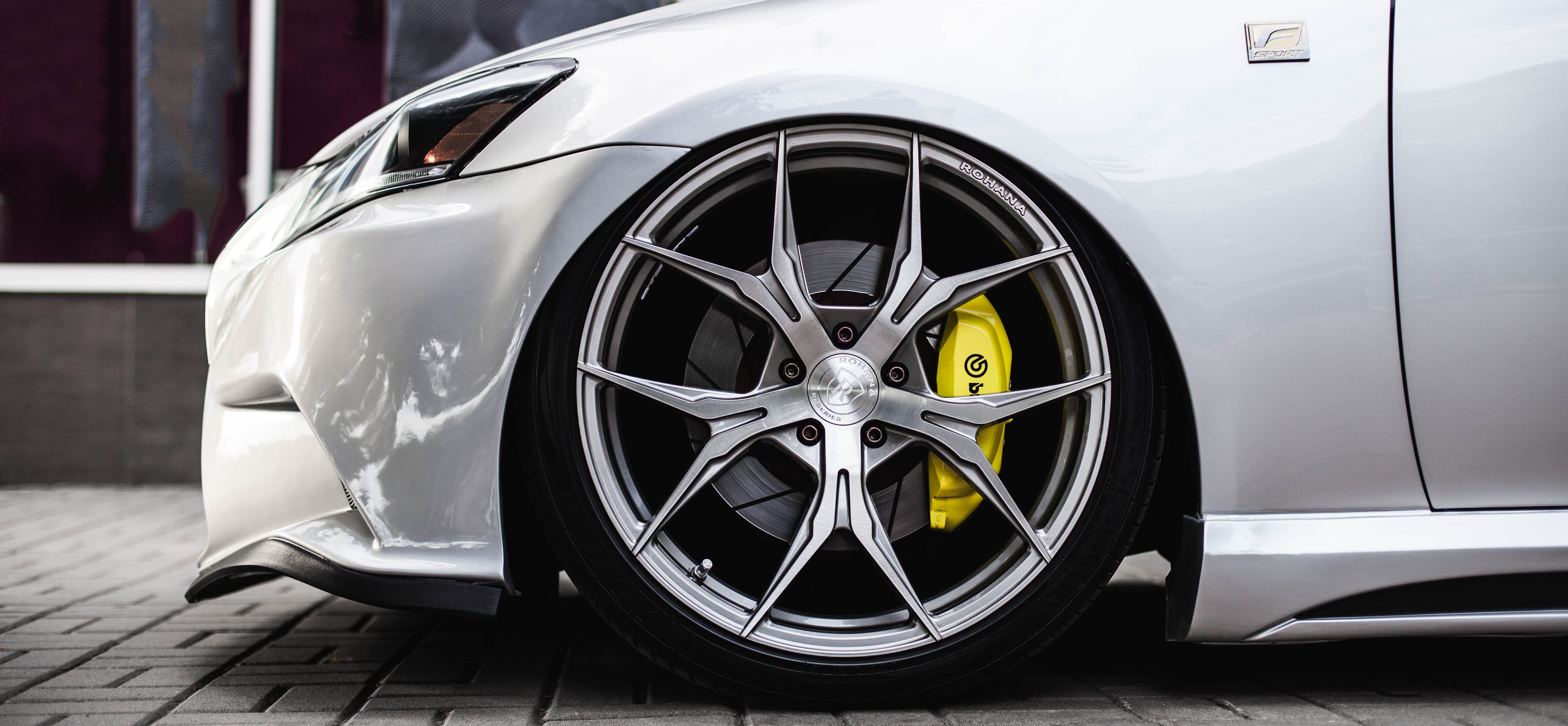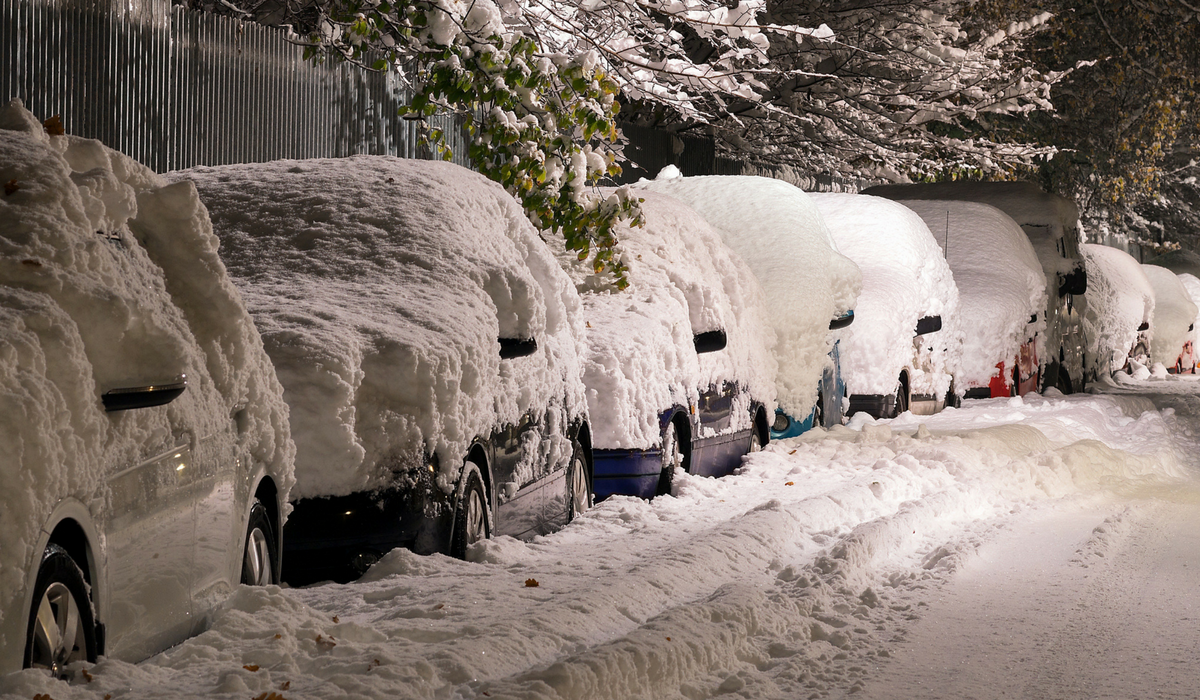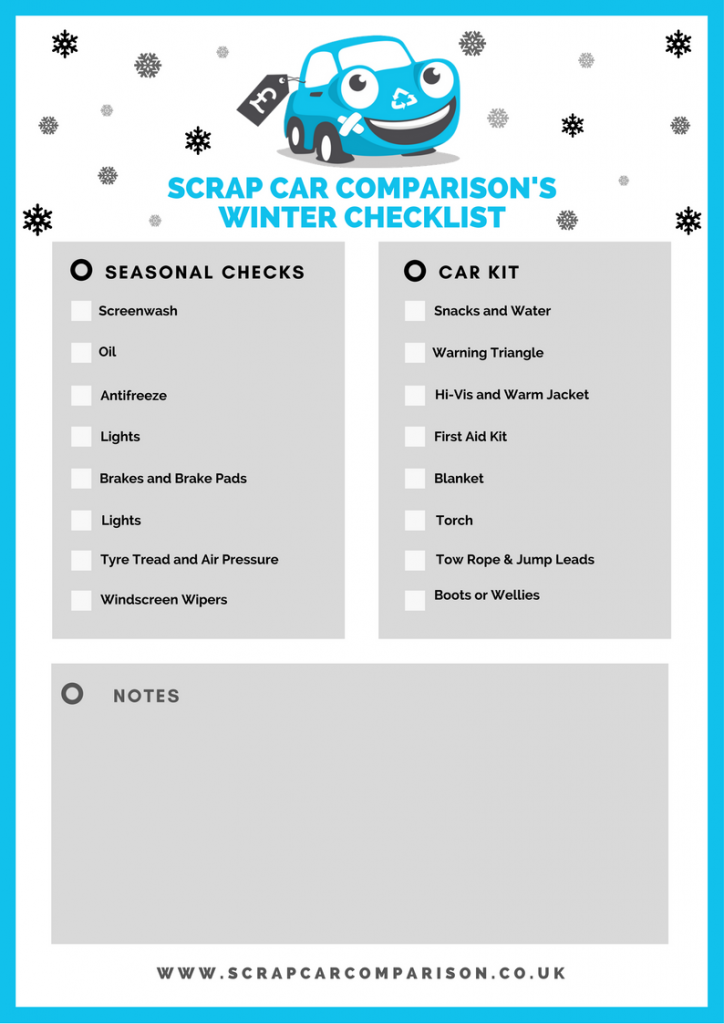Game of Thrones said it best when they said “winter is coming”. Because it is, and whilst we’d like to prolong the crisp autumn weather just a little bit longer, it won’t be long until fresh turns to frost and leaves us running late for work with frozen windshields, all because we weren’t prepared for the temperature drop. Which is why we’ve compiled our top-tips for surviving the UK’s unpredictable winters.

Winter Car Checks
One of the most problematic occurrences during a seasonal change is people not adapting their driving style to suit the new conditions in which they find themselves driving in. When it comes to weather, the United Kingdom is pretty unpredictable and so you’ll often see a mix of snow, fog, sleet, ice and flooding – sometimes all in one trip! The Met Office publish weather warnings up to a week in advance, but these of course still aren’t perfectly accurate. Because of this unpredictability it’s important to ensure that your vehicle is well maintained to ensure it’s ready for all driving conditions. A large percentage of incidents which occur throughout the winter season could have been prevented if people were less negligent when it comes to caring for their vehicle and maintaining the quality of their vehicle’s components. For example; checking a vehicle’s tread depth, tyre pressure levels and that all of the lights work are two elements which are incredibly easy, and fast, to check. Yet many people neglect this and put themselves, and others, in danger. Especially in low-light or conditions with limited visibility.
So, what should you do when prepping your car for the colder months?
Change Your Screenwash
Your screenwash should always be kept topped up as being able to see when driving is incredibly important. But, ensuring that your vehicle is topped up with the right type of screenwash is just as vital. When it comes to choosing a screenwash we recommend that you choose one which is both smear free and suitable for conditions up to at least -10°c.
Buy A Car Dehumidifier
There are numerous names for vehicle dehumidifiers; moisture traps and moisture absorbers are just two of them, but essentially what they do is absorb any moisture in the inside of the vehicle. They’re relatively inexpensive (around £2-£10 depending on your choice of brand) but will help prevent your vehicle’s windscreen from fogging up or condensating on the inside.

Check Your Windscreen Wipers
As mentioned earlier, seeing when driving is crucial and so it’s important to have windscreen wipers which clear your screen effectively. Because of this you should ensure that your wipers are replaced regularly. If it has frosted overnight then we also recommend checking that your wipers are not stuck to the windscreen, before you get in the vehicle, too.
Refill Coolant / Antifreeze
Cars are useful – cars which are frozen and do not work? Not so much. Which is why it’s important to check that your vehicle’s coolant supply is always sufficient. Coolant and antifreeze serve the same purpose – maintaining the temperature of the engine whilst protecting it from corrosion, but there are differences to the solution. Coolant is essentially just antifreeze mixed with water, whereas antifreeze is the liquid which prevents the water inside the vehicle’s engine from freezing, and it also raises the boiling point of engine coolant (typically to 130°c) which prevents the water from evaporating and the engine from overheating. It also helps to protect the engine from corrosion and prevent scale from building up internally.

Check Your Lights
During winter visibility drops. Not just because darkness sets upon an evening sooner, but because the changes in temperature bring rain, mist and fog with them which can make it harder to identify what type of vehicle it is, or how far away they are. For example; a vehicle may overtake another vehicle in the dark thinking it has plenty of time and space to do so with a motorbike up ahead, but that motorbike could be a car with a broken headlight – only the driver wouldn’t know that until the distance between each vehicle had significantly decreased.
Checking your lights is easy. Simply turn them on and walk around your vehicle to check that they all work. Alternatively, you can ask a friend, passerby or use a reflective surface to check, which is handy when you need to identify whether the brake and reversing lights work.
Check Tyre Tread Depth and Tyre Pressure
Tyres are the only point of contact between your vehicle and the ground so not only do they take the brunt of everything, but they become worn more quickly as a result. Because of this it’s important to make sure they have adequate tread depth and are always correctly inflated. When it comes to checking the air pressure of your tyres, it’s advised that it is always done when the tyres are cold. This means that if you have used your vehicle you should wait three hours before checking the pressure as it may give an inaccurate reading. If your vehicle is already cold it’s suggested that you use a garage within a mile drive as anything longer than this will heat up the tyres. In the event that your tyre pressure is low and you cannot wait for the vehicle to cool to accurately check the pressure gauge, the Michelin website recommends adding 4-5 psi (0.3 bar) on top of the manufacturer’s recommendation and then checking accurately with cold tyres as soon as you are able to.

Test Your Brakes
One of the most important checks on a vehicle is ensuring that the brakes work. After all, you only need lights in limited visibility situations or when it’s dark but with brakes, you need them all the time. Doing this is simple as you just need to move your car slowly and check that the brakes can stop the vehicle appropriately. You’ll also need to ensure that your brake pads are of a sufficient quality. Typically brake pads need changing every 20,000 – 50,000 miles or so but this is dependent on make, model and load weight. The owner’s manual will usually have an estimation of how regularly they’ll need changing to give you a rough idea however, different use and driving styles mean components age differently and so it’s important that you keep an eye on this.

In addition to making sure your vehicle is well maintained there are also things you can do personally to ensure you stay safe whilst driving during the winter months.
Don’t Drive Whilst Tired
This goes without saying, but so often you’ll find people who ignore this advice. Typical examples are when people go for an evening out with friends; they’ll get tired and then decide to drive home – rather than leaving earlier and driving home whilst they are much more alert. One of the biggest issues with driving whilst tired isn’t just the risk of falling asleep at the wheel, but the risks which are associated as a result of delayed reaction times.
If you do start to feel drowsy whilst driving you should pull over at the closest service station or next appropriate safe spot to do so and have a rest. It’s important to stay alert when driving at all times but especially so when driving in winter conditions as there are more elements to contend with. Water on the road which causes aquaplaning, sudden gusts of wind which cause the vehicle to veer suddenly to the side and objects falling in the road are all more likely to happen during the winter season and so it’s important to always be well rested and alert to help avoid accidents occurring. In addition to regular rests you should also keep a window slightly ajar when driving. This helps to circulate cool, fresh air and can help combat the drowsiness felt as a result of having the car’s heating on.
Change Your Driving Style
Think less Lewis Hamilton and more James May. Driving erratically is dangerous anyway but doing so during winter when the conditions are so much harsher, carries even more of a risk. Harsh braking and quick acceleration can both cause skidding so it’s important to leave longer braking distances, so that in the event you do need to brake it isn’t done so abruptly. If for any reason the conditions are particularly harsh you shouldn’t drive and should try to wait until the bad weather has subsided. However, we understand this isn’t always possible and so if you do have to drive during a bout of bad weather be sure to keep your phone charged so that you can contact somebody should you need to. In addition to this, if the weather is particularly treacherous, be sure to alert somebody when you are about to start your journey and what time you are due to arrive.
Prepare a Basic Winter Car Kit
Looking after yourself and staying safe in winter is vital, but unfortunately whilst you can control certain elements of safety from caring for your vehicle, you cannot control hazards outside of this such as other drivers or mother nature herself. Crashes, diversions, fallen trees and vehicles breaking down are all elements which can be outside of your control and so when circumstances such as these occur, it’s important to ensure that you’re both safe and prepared. You can do this by packing a winter care kit to leave in your car so that you always have the appropriate items available should you find yourself in an emergency situation. The best items to include in your winter care kit are:
- Snacks and Water: Because you don’t know how long you’ll be waiting for and nobody likes to be hungry!
- Warning Triangle: So you can alert other drivers when necessary.
- Hi-Vis and Warm Jacket: In the event that it is unsafe for you to stay inside your vehicle and you need to wait outside.
- Blanket: For extra warmth
- Phone Charger or Portable Battery Pack: So that you can call people in the event of an emergency situation, whether the police, a recovery truck, family or friends.
- First Aid Kit: In case you, or somebody else, becomes injured.
- Boots or Wellies: We don’t tend to plan our outfits around driving and so sometimes the shoes we wear in a vehicle are not suitable for all occasions. For example; You could break down whilst on route to a black-tie event. Smart dress shoes are not suitable to winter conditions and so it’s advisable to keep a pair of boots or wellies in your car ready for an event where you may need them.
- A Powerful Torch: Being able to see is useful and so having a torch is incredibly handy in case you find yourself in a situation where it’s dark and you require light. For example; if it’s dark and you need to change to your spare tyre.
- Snow Equipment: England is pretty unlucky when it comes to snow and you don’t usually see more than a few inches on a lucky year. However, in places further up north the snowfall is much heavier and so it pays to be prepared and keep a shovel, scraper and some de-icer in your vehicle.
- Tow Rope and Jump Leads: Because you never know when your own vehicle, or others, may need a helping hand!

What Happens If I Don’t Keep Up With Winter Car Maintenance?
Neglecting your car at the time of year when it needs your TLC the most can have catastrophic effects on your driving and the journeys you intend to make. Not only might you end up suffering problems with your car during the winter months, like leaks, you will also find enhanced levels of wear and tear later on throughout the year. The poor weather conditions will impact your tyres, your rubber seals and, if your car is fairly old, it could even end up rusting.
But, the biggest danger that stems from not maintaining your car in the winter is quite literal. Not looking after your car could put you, your passengers, and other road users in very real danger, especially when it comes to keeping your tyres and lights in working order. Hitting the slushy, wet roads on tyres with inadequate tread could be deadly.
How To Keep Track of Your Winter Car Preparation
Whilst we cannot control the weather we can control how safe we are when driving in those conditions by ensuring that both our vehicles, and ourselves, are prepared and because remembering this entire article would be incredibly difficult, we’ve created this handy printable checklist to help you stay on top of your winter maintenance!

If your car has suffered damage after you (or another road user) attempted to drive in treacherous conditions, or you simply want something that’s more suited to icy roads and slippery hills, sell your car now with Scrap Car Comparison and we’ll find you the deals that will earn you a good chunk of money to put towards something newer. Our nationwide network of scrap and salvage buyers are stationed all over the UK, meaning wherever you are, we’ll have someone ready to buy your car – and they’ll even collect it from you at no extra cost! Give us a call on 03333 44 99 50 or use our scrap car price calculator to get your vehicle valued now.


